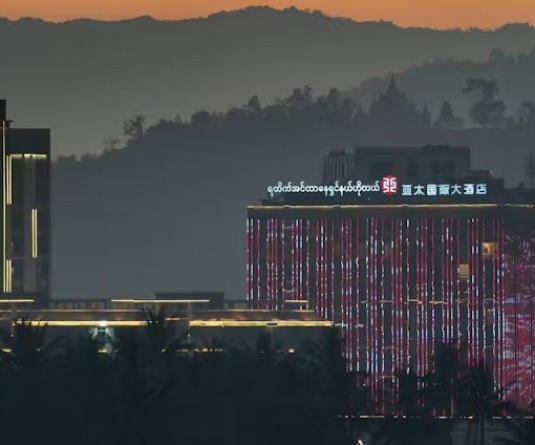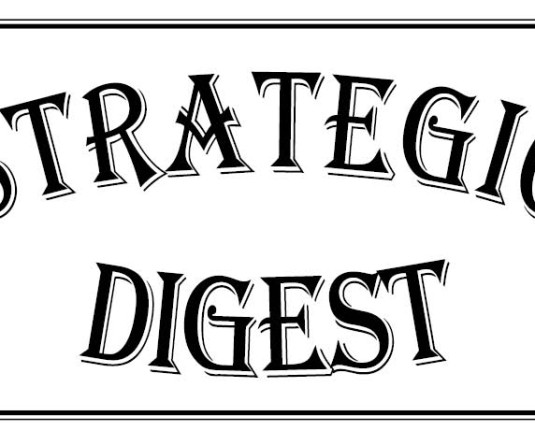Chart 1a: Proportion of male contestants against female contestants in Assembly elections between 1964-2023 Chart 1b: Proportion of male legislators against female legislators in Assembly elections between 1964-2023. (Source: Directorate of Economics and Statistics, Nagaland)
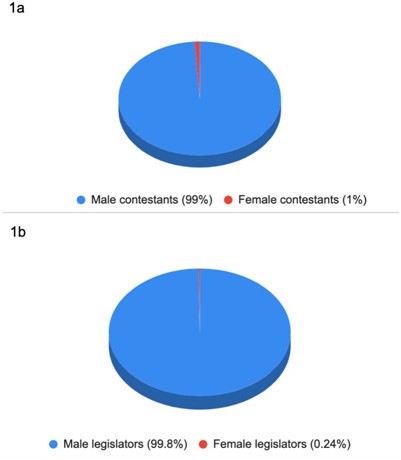
Ruguoser Liegise
Kuda Village B, Dimapur
In an article titled Nagaland women: socially empowered, absent in politics published in The Hindu on March 1, 2023, Rebecca R. Varghese and Vignesh Radhakrishnan presented a strong case for the need of greater women representation in Naga politics and administration– a domain that has thus far been male-dominated.
Despite being a top-performing state in women empowerment-related indicators – education, nutrition, absence of domestic violence–improvement in social empowerment has not been commensurate with that of political empowerment. Whereas the data point toward a socially just and equitable society, the dearth of women in the political and public sphere presents a rather peculiar case that warrants some degree of analysis.
Status of women participation in Nagaland’s electoral process
The year 2023 marked a watershed moment in the political history of Nagaland as two women legislators were inducted into the Legislative Assembly 60 years post-statehood. Indeed, this is a significant milestone not just for the feminist movement in Naga society, but for the body politic.
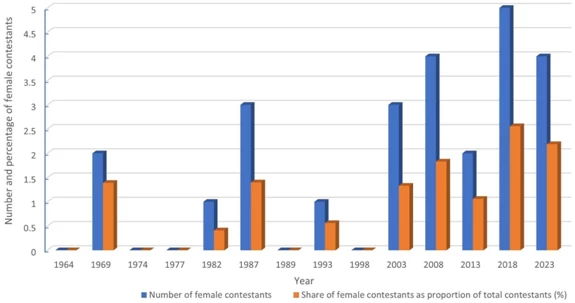
Having established that, let us now put things into perspective.
From the 1st Nagaland Legislative Assembly (NLA) Election in 1964 to the most recent 14th election in 2023, women contestants comprised a measly 1% of the total 2,507 that contested (see Chart 1a). In fact, five of the fourteen Assembly elections – 1964, 1974, 1977, 1989, 1998 – saw no woman contestant (see Chart 2). It was only after the turn of the new century that elections witnessed more frequent participation of women contestants, of which 2018 saw the highest number of women candidates, constituting 2.56% of the total pool of contestants for that particular year.
Out of the 2,507 that contested between 1964-2023, 818 have been elected to the Assembly (see Chart 1b). The two women legislators in the current 14th NLA account for a meager 0.24% of the total pool.
Trends in electorate participation
Preliminary statistical analysis of the gender division in the electorate participation rate (see Chart 3) in the same time period elicits figures that are indicative of a fairly equal participation rate. In fact, eight of the fourteen Assembly elections witnessed marginally greater female participation rate than their male counterparts. But across the board, women showed a greater average participation rate of 80%, as opposed to 78% among men.
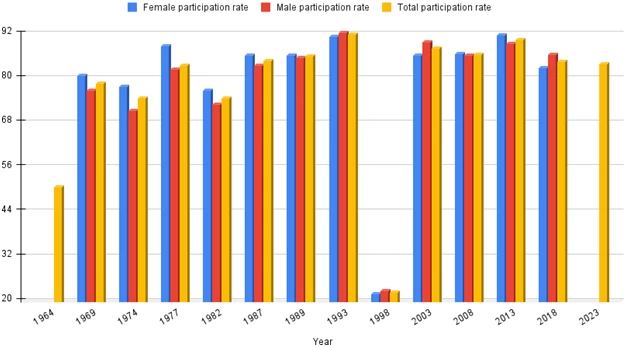
So what? And Why?
Equality and accessibility of opportunities, irrespective of gender, are essential in a free society. They are fundamental indicators of a modern and liberal democracy, whose principles India is ascribed to, insofar as the Constitution of India is concerned. The pursuit of gender parity is therefore a pursuit for holistic development that cuts across all sections of our society – politics, economics, culture and tradition.
The underrepresentation of women in the political landscape of Nagaland is not only a concern for its democratic health, but is intertwined with cultural and socio-economic conditions.
Like most developing societies, the current transitory phase of our rural-agrarian economy to that of an industrial-urban society raises fundamental questions that confront any modern and free society. These are problems associated with the gendered division of labor, allocation of resources, distribution of power, and a real contestation of the culture of domesticity associated with the female gender in the Naga family structure. Evidently, social expectations regarding gender roles of fatherhood and motherhood have not changed as significantly as the labor market, especially women’s roles.
Understanding how and why the social norms holds way in our communities can help to address these systemic inequalities, and bring about greater gender diversity in both the private and public spheres.
The need for reforms- Way forward
The Government of India, and by extension Nagaland, must, with diligence and sincerity, work towards fulfilling the goal of ensuring gender equality by2030.Inparticular, there are two indicators of Sustainable Development Goal (SDG) 5 that must receive the unequivocal infrastructural and institutional support of policymakers:
1. SDG 5.5 strives to ensure full and effective women participation and access to opportunities for leadership at all levels of decision-making in political, economic and public life.
2. SDG 5.a pushes for reforms to ensure equal rights to economic resources, financial services, inheritance, and ownership over land.
As the Nagaland government doubles down on its promise to conduct the municipal elections by the end of April 2024 in accordance with the Nagaland Municipal Act 2023, it is with great hope that this exercise will advance the state towards greater political empowerment of women and set a precedent for the ensuing years.



